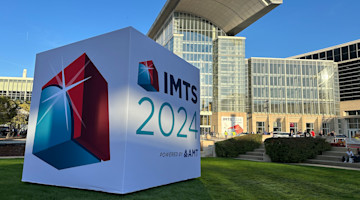The White House announced new tariff rates for Southeast Asian countries at the end of July, effective Aug. 7. The original tariff rates announced in April were as high as 46%, which would have severely impacted trade with the United States. New rates for most countries in the region were lowered to between 19% and 20%, including the three nations discussed here, Malaysia (24% to 19%), Thailand (36% to 19%), and Vietnam (46% to 20%).
Malaysia
The United States is Malaysia's third-largest export partner, with trade reaching approximately $45 billion in 2024, accounting for 9% of its GDP. Malaysia's largest export category to the United States is electrical and electronic equipment, including integrated circuits and semiconductor devices. This is a critical sector, with integrated circuits alone accounting for over $9.6 billion of exports to the United States in 2024.
Malaysia continues to see a surge in foreign direct investment. Opportunities are strong for U.S. exporters to sell smart manufacturing and automation systems. A central part of this plan is a push to establish at least 3,000 smart factories by 2030. The government supports this through various initiatives, including a capital allowance plan offering a 200% tax deduction on automation investments and other financial support programs for advanced technology adoption.
Recently announced investments include:
TF AMD Microelectronics committed to an investment of approximately $250 million for integrated circuit production.
INV New Material Technology announced a new lithium-ion battery separator facility with an investment of $760 million.
Londian Wason Copper Foil announced an investment of approximately $330 million.
Plexus Manufacturing will invest $240 million to build its sixth manufacturing facility.
Siliconware Precision Malaysia, a Taiwan-based company, will invest approximately $1.42 billion to assemble and test integrated circuits.
Thailand
The United States is Thailand's largest export partner, with exports reaching approximately $55 billion in 2024, accounting for about 10.4% of its GDP. Electrical and electronic equipment is Thailand's largest export category to the United States, valued at nearly $18 billion in 2024, including products like integrated circuits, computers, and telecommunications equipment.
Record-breaking FDI: Applications for investment promotion filed with the Thailand Board of Investment reached an unprecedented $32.5 billion in the first half of 2025, a 139% increase year-over-year. It’s worth noting that while these announced investments are not yet funded, manufacturers are continuing to invest in Thailand despite uncertainties over tariffs.
Vietnam
Vietnam had the most to lose from high tariffs, as its exports to the United States topped $130 billion and accounted for nearly 30% of GDP. For Vietnam, a particularly positive development is that its largest export category, electronics, which includes smartphones and computers, is mostly exempt from tariffs in the short term.
A central part of the new tariff policy is a stringent crackdown on transshipment, which involves rerouting goods through a third country to avoid tariffs. It’s no secret that this measure is aimed at China; with China’s recent investment surge in Vietnam’s electronics supply chain, more adjustments could be forthcoming to Vietnam’s electronics exports.
Vietnam’s government continues to support and even subsidize the implementation of smart manufacturing and automation. Driven by a 27% surge in foreign investment for the first seven months of 2025, which totaled $24 billion, Vietnam remains a strong market opportunity for AMT members.
For more information, please contact Mike Lauer at mlauer@AMTonline.org, and to learn how to take advantage of these opportunities, click here.






